- Faulkner State Community College has an open-door admissions policy and is committed to the professional and cultural growth of each student without regard to race, color, gender, disability, religion, creed, national origin, or age. The College strives to provide an educational environment that promotes development and learning through a wide variety of educational programs and instructional strategies, adequate and comfortable facilities, a caring and well-qualified staff, flexible scheduling, and convenient locations. This effort is based upon the economic and social needs of the College service area.
School Highlights
Coastal Alabama Community College serves 9,213 students (34% of students are full-time).
The college's student:teacher ratio of 22:1 is higher than the state community college average of 20:1.
Minority enrollment is 36% of the student body (majority Black), which is less than the state average of 43%.
Quick Stats (2025)
- Enrollment: 9,213 students
- In-state tuition: $4,200
- Out-state tuition: $7,530
- Student:teacher ratio: 22:1
- Minority enrollment: 36%
- Source: Integrated Postsecondary Education Data System (IPEDS)
Top Rankings
Coastal Alabama Community College ranks among the top 20% of public schools in Alabama for:
Category
Attribute
Community Size
School Overview
The teacher population of 410 teachers has stayed relatively flat over five years.
Coastal Alabama Community College
(AL) Community College Avg.
Carnegie Classification
Associate's Colleges: Mixed Transfer/Career & Technical-High Traditional
Associate's Colleges: Mixed Transfer/Career & Technical-High Traditional
Institution Level
At least 2 but less than 4 years
At least 2 but less than 4 years
Institution Control
Public
Public
Total Faculty
410 staff
153 staff
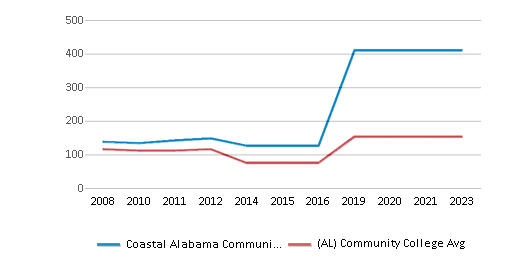
School Calendar
Student Body
The student population of Coastal Alabama Community College has grown by 22% over five years.
The student:teacher ratio of 22:1 has increased from 16:1 over five years.
The Coastal Alabama Community College diversity score of 0.53 is less than the state average of 0.60. The school's diversity has grown by 6% over five years.
Total Enrollment
9,213 students
2,464 students
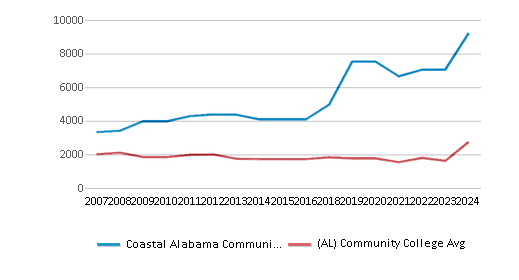
Student : Teacher Ratio
22:1
20:1
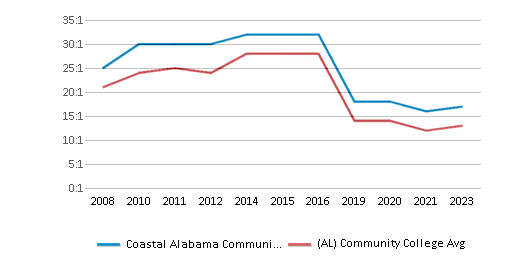
# Full-Time Students
3,120 students
873 students
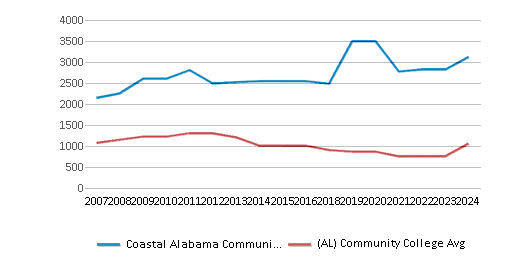
# Part-Time Students
6,093 students
1,855 students
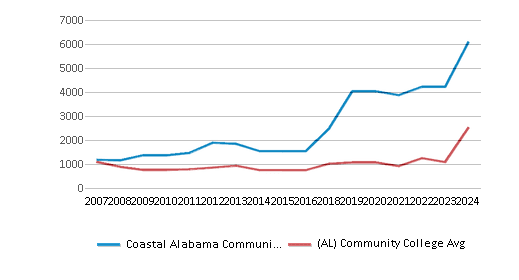
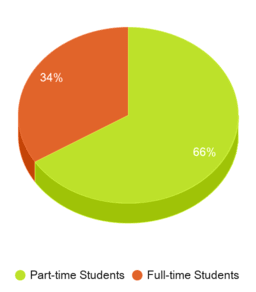
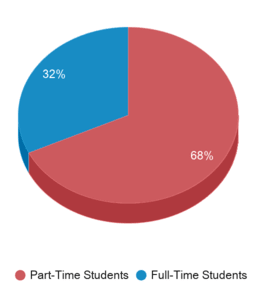
# Enrollment Undergraduate
921 students
422 students
# Full-Time Undergraduate Students
3,120 students
873 students
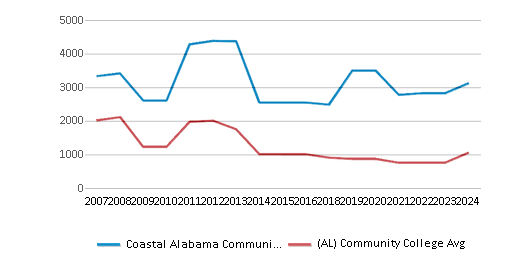
# Full-Time Graduate Students
n/a
11 students
# Part-Time Undergraduate Students
6,093 students
2,077 students
# Part-Time Graduate Students
n/a
30 students
Total Dormitory Capacity
593 students
168 students
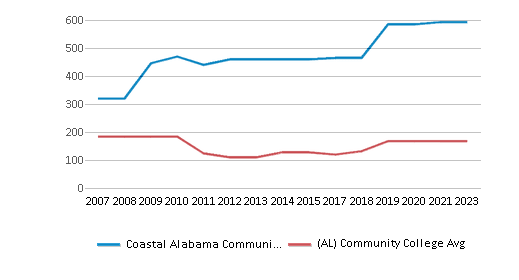
% American Indian/Alaskan
1%
n/a
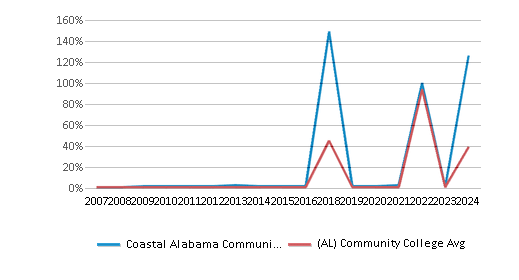
% Asian
1%
2%
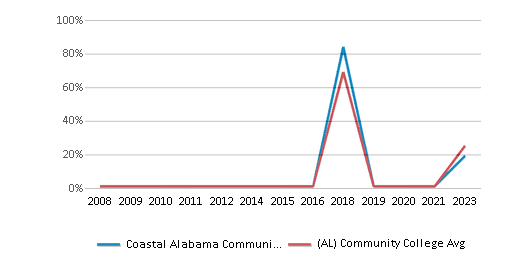
% Hispanic
4%
6%
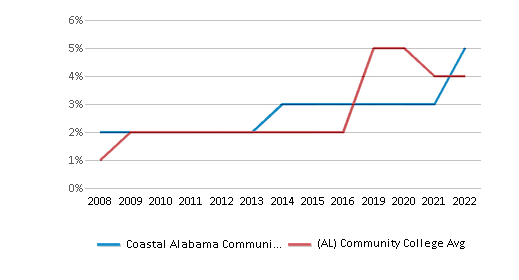
% Black
23%
27%
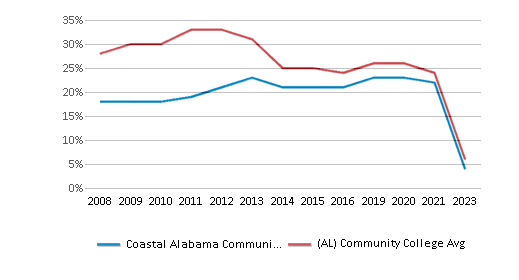
% White
64%
57%
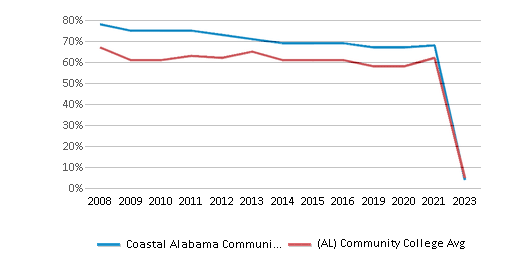
% Hawaiian
n/a
n/a
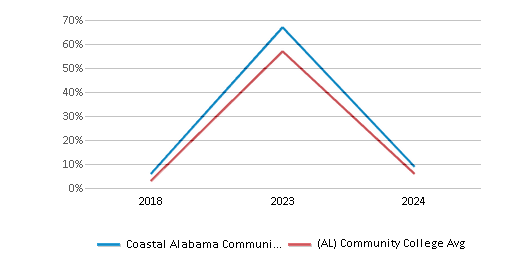
% Two or more races
5%
4%
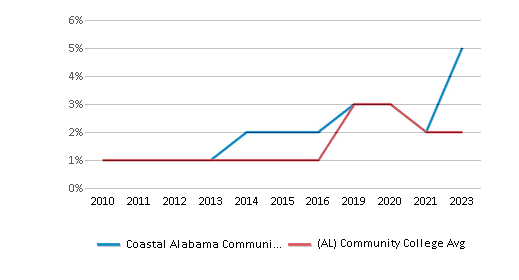
% Non Resident races
n/a
1%
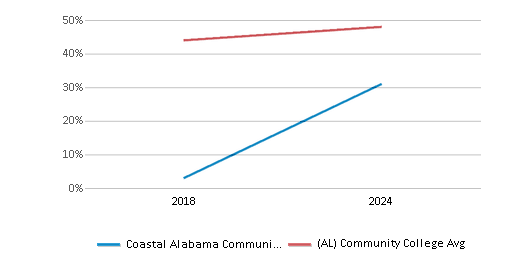
% Unknown races
n/a
3%
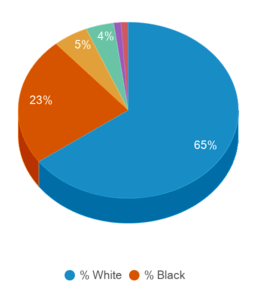
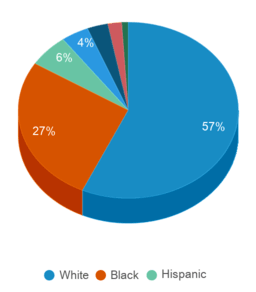
Diversity Score
0.53
0.60
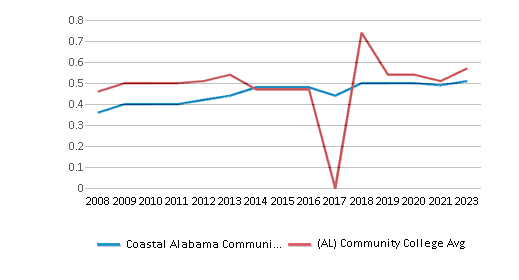
College Completion Rate (Students who graduate in less than 4 years)
0.2246%
0.2683%
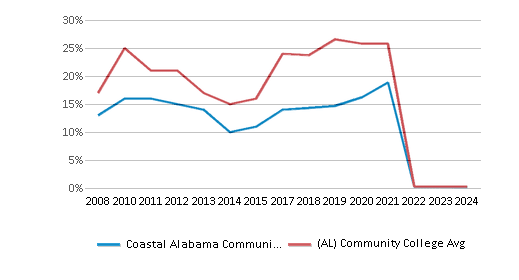
College Completion Rate (Students who graduate in 4 years or more than 4 years)
n/a
0.3%
Average Graduate Earnings (10 Years)
$31,800
$29,700
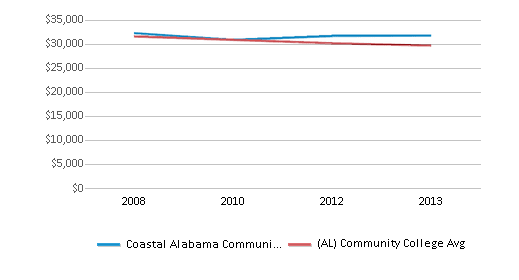
Tuition and Acceptance Rate
The public in-state tuition of $4,200 is more than the state average of $4,077. The in-state tuition has declined by 13% over four years.
The public out-state tuition of $7,530 is more than the state average of $7,206. The out-state tuition has declined by 14% over four years.
In-State Tuition Fees
$4,200
$4,077
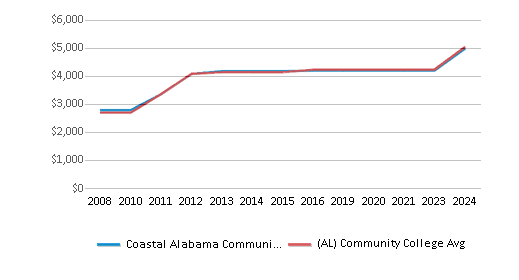
Out-State Tuition Fees
$7,530
$7,206
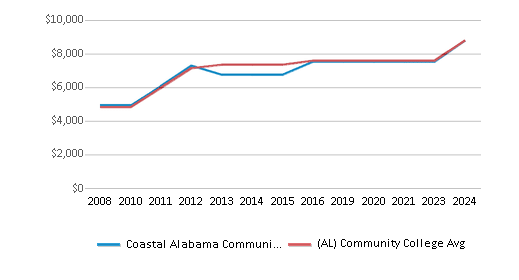
% Students Receiving Some Financial Aid
90%
90%
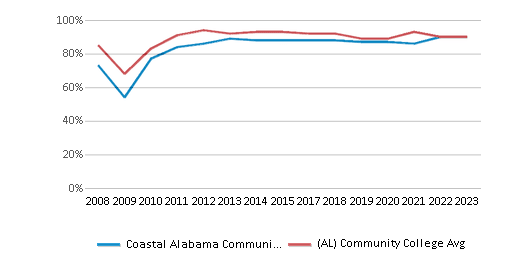
Median Debt for Graduates
$11,747
$10,500

Median Debt for Dropouts
$5,500
$5,500
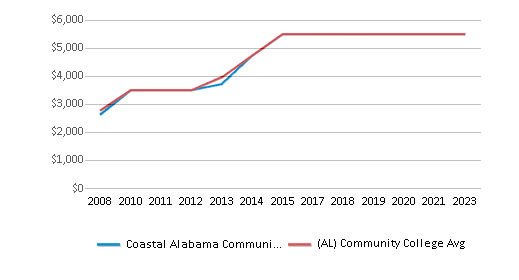
Acceptance Rate
n/a
81%
SAT Reading
n/a
530
SAT Math
n/a
545
ACT Composite
n/a
23
ACT English
n/a
21
ACT Math
n/a
22
Source: 2024 (or latest year available) Integrated Postsecondary Education Data System (IPEDS) , School Administrators
School Notes
- Faulkner State Community College, a public two-year institution located in Baldwin County in southwest Alabama, has three campuses located in Bay Minette, Gulf Shores, and Fairhope.
- The Bay Minette campus is the administrative campus. The College which was one of the 13 original two-year colleges created by an act of the Alabama Legislature in 1963 is under the authority of the State Board of Education.
- Faulkner State is a member of the Alabama College System which is composed of the thirty-one public two year colleges and the one upper division college.
- Faulkner State Community College offers some courses over the Internet each semester. Internet classes are designated as such in the class schedules. You are encouraged to complete an Internet class orientation prior to the beginning of your first Internet class.
- The College is dedicated to the total development of the individual and provides many opportunities for student participation.
- Students bring to the campus a variety of interests as members of the academic community. They are encouraged to continue their interests in various campus clubs and organizations and to form new associations.
Frequently Asked Questions
How much does Coastal Alabama Community College cost?
Coastal Alabama Community College's tuition is approximately $4,200 for In-State students and $7,530 for Out-State students.
What is Coastal Alabama Community College's ranking?
Coastal Alabama Community College ranks among the top 20% of community college in Alabama for: Largest student body.
Recent Articles

Obtaining Your Bachelor's Degree at a Community College
Explore the evolving landscape of community colleges offering bachelor's degrees, addressing affordability, accessibility, and workforce needs.

A to Z of Community College Certificates and Courses
From business and healthcare to technology and skilled trades, the article showcases the breadth of options available to students seeking to enhance their knowledge, develop new skills, or pursue career advancement.

What is a Community College?
This comprehensive guide explains what a community college is, its history, and its role in higher education. It covers the types of programs offered, differences from four-year colleges, benefits of attending, and important considerations for prospective students, providing valuable insights for those exploring educational options.









